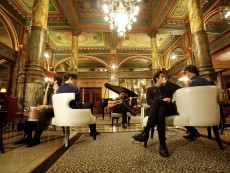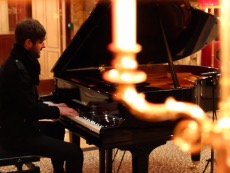Feu! Chatterton
It was the day before their first album release « Ici le jour (a tout enseveli) » and a couple of hours before their sold-out concert in the Botanique that we met the 5 guys of Feu! Chatterton. �...
It was the day before their first album release « Ici le jour (a tout enseveli) » and a couple of hours before their sold-out concert in the Botanique that we met the 5 guys of Feu! Chatterton. �...
While he is still little known in Belgium and France, Pierre Lapointe has been a big name in Quebec for the last 10 years. In between two Brussels concerts at the Orangerie of the Botanique, Pierr...
Le Café Métropole opened in 1890 by the Wielemans brothers, brewers at Forest with the aim of promoting their beers. Due to their tremendous success, they bought the neighbouring building, the former “”Caisse d’Epargne”” headquarters and turned it into the Métropole Hotel.
It is in this way that a palace was born, embodying a new concept for the end of the nineteenth century.
A palace is in other words a luxurious hotel equipped with the most up-to-date facilities: lifts, electricity, central heating, not to mention the richness of the decor and high quality service. Inside, all architectural styles are depicted in an air of luxury and richness of materials: panelling, polished teak, marble of Numibia, gilded bronze and forged iron, all competed to give the impression of comfort in the 1900 era.
The French architect Alban Chambon, already responsible for the decoration of The Métropole Café, was appointed by the owners to carry out the interior design of the hotel
The French Renaissance main entrance, leads to the Empire style reception hall, where columns and pillars line the room. The attentive observer will linger in front of the beautiful stained-glass windows, which would be used widely later on by the art-nouveau style. To the right, lies a large staircase and the lift with its elegant and timless mahogany case. Chambon did not hesitate to call upon the best artists and craftsmen of his era who assisted him in his work. It is in this respect that the bronze Nymph on the fountain of the Roman-style restaurant that has now been converted into a café was signed by Julien Dillens. An Indian lounge and an Italian Renaissance reception hall complete this refined collection of styles.


